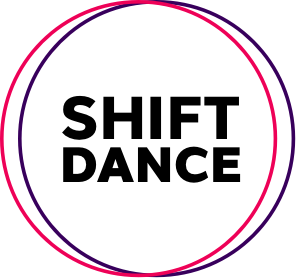Methods, Observations and Process
 In January we started with our first block on alignment and strength. Both me and Manouk devised the class immediately after our last exchange day in Leeds. Our minds were fresh and full with new ideas to test out.
In January we started with our first block on alignment and strength. Both me and Manouk devised the class immediately after our last exchange day in Leeds. Our minds were fresh and full with new ideas to test out.
We came up with over 6 set excercices combined with explorations which were all based on the template. Our class became:
- Body awareness
- Initiation by the upper body
- Strength on the floor
- Locomotion
- Resistance towards the floor
- Foot focus
We also had decided together as partners that several tests needed to be conducted with the dancers. These had to be taken by the beginning and end of the first block. Within this blog I am not going to shine my light upon the test results as I can only conclude by the end of this research if there is a significant change.
Over 3 months we worked with the Company group. This group consists in total of 7 people; 2 interns, 4 dancers with down syndrome and a dancer with spasms. The group works 2 days a week (Thursdays and Fridays) with 2 hours of training each day from 9:30 to 11:30 AM. 
We started with the prepared lesson sheet that Manouk and I created just after the exchange. Within this sheet the exercises and objectives are written down. Generally this was the base of the class. Over time exercises developed or were combined with others. Every company day was taught by another teacher. Manouk Schrauwen was teaching Thursdays and Suzanne Lamers was teaching Fridays. With this way of working we could see what objectives and ways of teaching was picked out and which exercises and objectives worked in generally. Also we have worked with the same class within our community hub classes. These classes are a more beginner level and accessible for dancers with a multiple learning, physical and or behavioural needs.
After 3 months a few things stood out by looking at the dancers and the observations. 3 months of training the same class or similar material had benefits but also issues. We saw that some dancers gained more confidence and would be more happy to show the material/ exercises on their own. Also they could more easily answer questions about class, so sticking with the same material for a longer period did facilitate a deeper level of understanding and embodiment. However, balancing this with ensuring the class material was varied enough to maintain interest and increasing challenge at the right time was more difficult. 
Another area we are looking at is the social and emotional skills such as autonomy, self-reliance and self-reflection. The general awareness of the social skill that is needed in order to become a professional dancer. What is needed to grow as a dancer and how do you facilitate that for dancers who need help with these things? How can it become part of the class and training as a underlying aim/goal/objective?
The testing methods we have devised such as the wheel we to monitor different skills (physical, psychological and social) made oppositions clear. You can see immediately where some strengths and weaknesses are. Besides we have noticed that the aims and objectives of this class needed to be mentioned constantly. Just a reminder of how to stand parallel and how to grow taller. This needed to become a habit and therefore in my opinion also strongly connected to taking responsibility as a dancer. You need to see, hear and feel it almost daily, but also need to go to class knowing what you work on and what you want to work on.
In general we have found that working on the floor brings difficulties in so many ways (spacial awareness, body awareness, groups dynamic, strength, cognitive etc). Therefore we think it was needed to already introduce the floor and different directions earlier in class. We found that for some dancers both teacher and dancer need to find another way to execute the exercise as they cannot see the teacher all the time. They need another point of reference to help them remember the exercise. For beginner groups it is a very important working point. The floor is often forgotten, but so important because it gives a whole different experience but needs to be built up slowly and carefully. 
Because we work with a mixed group we have to take in account the limited space and room needed for adaptations. And that these are also working on the same aim and objective. We didn’t focus too much on these and therefore it was noticeable who needed them. They felt a little left out. We have found that we didn’t use our props so much as only showing them once or twice. We would like to interact and collaborate with these props more. They should become more than only an image. Maybe even an experience.
To close this reflection I would like to mention that is was a delight to work with the group and teachers in a different way and be able to reflect, observer and raise questions. Some will never be answered, good or bad. However, others might be clearer for us. All questions have brought us further in our exploration towards a new methodology.
Joop and Partners
The European Commission support for the production of this publication does not constitute an endorsement of the contents which reflects the views only of the authors, and the Commission cannot be held responsible for any use which may be made of the information contained therein.


